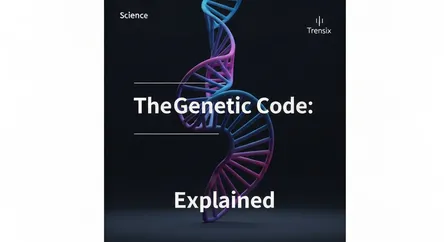Science
The Genetic Code: Explained

Discover the genetic code, the set of rules used by cells to translate genetic information into proteins. Learn how it defines life as we know it.
What is it?
The genetic code is the set of rules that living cells use to translate information encoded in genetic material (DNA or mRNA) into proteins. This biological 'language' uses four nucleotide bases—A, U, G, and C—which are read in three-letter groups called codons. Each codon specifies one of the 20 amino acids used to build a protein, or it signals the process to start or stop. For example, the codon AUG is the universal start signal. This code is remarkably consistent across almost all organisms on Earth, from the simplest bacteria to complex animals, highlighting a shared evolutionary history.
Why is it trending?
Interest in the genetic code is surging due to breakthroughs in biotechnology. Gene-editing tools like CRISPR allow scientists to precisely alter DNA sequences, offering potential cures for genetic diseases. The rapid development of mRNA vaccines, which use the genetic code to instruct human cells to produce viral proteins and trigger immunity, has made its practical importance globally understood. Research into personalized medicine, which tailors treatments to an individual's genetic makeup, also keeps this topic at the forefront of science news.
How does it affect people?
Fundamentally, the genetic code determines an individual's inherited traits and susceptibility to genetic disorders. This knowledge is crucial for modern healthcare, enabling genetic testing, diagnosis, and the development of targeted therapies. It is the bedrock of the entire biotechnology industry, from creating new medicines to engineering crops with improved yields or nutritional value. The ability to read and even rewrite the genetic code is revolutionizing medicine, agriculture, and our capacity to combat diseases, directly impacting human health and well-being on a massive scale.